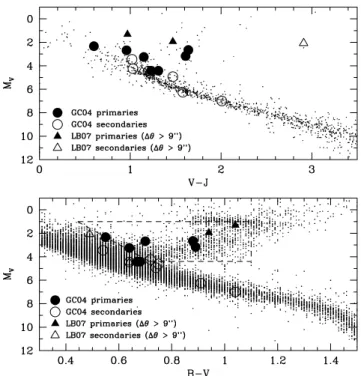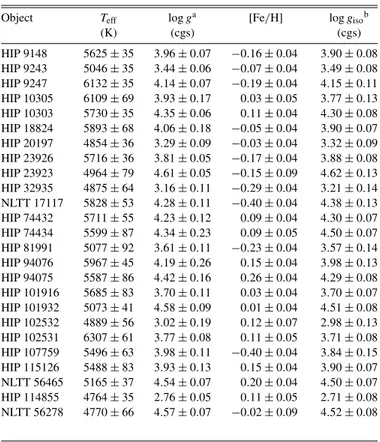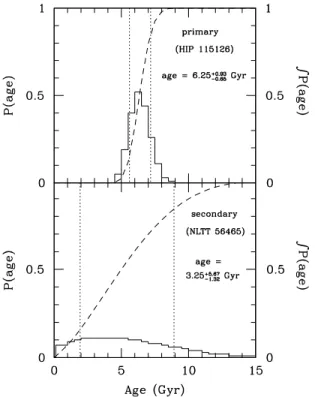Toward precise ages for single stars in the field Gyrochronology constraints at several Gyr using wide binaries I Ages for initial sample
Texto completo
Figure




Documento similar
For our sample, we select heads of household between the ages of 18 and 60 years of age (inclusive) who participate in the labor market, and of whom we have information on wages.
The emission spectra of a single QD are shown in Figure 5.7 for different excitation power P. The enlargement factors are indicated and spectra are shifted vertically for clarity.
Combining our measurements for the components of 16 new binaries with results for three similar, previously known systems within the DR7, we have constructed a mass distribution for
parameters of the binary orbit and the masses of the neutron stars can be measured with very high precision by accurate timing measurements.... The Masses of the Neutron Stars in
• The Initial mass function and the nucleosynthesis stellar yields or production of new elements in stars, are two essential inputs for the chemical evolution
These properties of the LIGO black hole binaries would come naturally from early universe models of PBH formation from large peaks in the matter power spectrum, arising both in
Using a combination of optical photometry and spectroscopy we esti- mate stellar masses, ages, and foreground extinction values of the brightest part of the population
These rotating models are computed for initial masses of the host star between 1.5 and 2.5 M , with initial surface angular velocities equal to 10 and 50% of the critical veloc-


